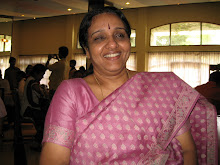Kerala’s contribution to the mosaic that makes up all things Indian has been enormous. History tells us that all the major religions of the world have found their way to India through the shores of Kerala. In the first century AD, St. Thomas landed at Kodungalloor in Central Kerala and in the 7th century AD, Islam reached Kerala through the Arabs who had flourishing spice trade with it. Surprisingly the Arabs too landed first in Kodungalloor. It is said that the Jews reached Kerala 2,500 years ago and settled in and around Kodungalloor. Vasco Da Gama the Portuguese traveler set foot in Calicut, Kerala in the year 1498 and as we all know the rest is history. All the above contributions have been noteworthy and historical. It must be the tolerance of the people to accept and try out something new that must have provided a fertile ground for the growth of these ideas and religions.
What made me write this article is the conversation I had with a friend a couple of months ago. While discussing trends in clothing, she suddenly came out and said, well, the Set Mundu/Kachimundu,Patturumala/and Chattayum Mundum seems to have been shown the back door in Kerala and it has been replaced by not the sari or the salwar kameez but by the maxi. It seemed really difficult to accept and digest. The mundu had started giving way to the sari about half a century ago however it was prevalent along with the sari. Today the set mundu has become a fashion statement among the youngsters. As for the traditional clothes of the Muslims and Christians it has I can say almost become extinct. In my childhood when I visited Kerala (read Calicut) we could see so many Muslim women wearing their Kachimundu and Patturumala and how graceful and beautiful they looked. The attire brought out the poet in you. It blended with the beauty of the landscape and was a visual treat to the eye. My trips to the Central Travancore regions were practically nil at that point and hence have not seen the Syrian Christian women in their Chattayum Mundum. However I am sure they must have looked really regal in these costumes along with their wonderful accessories.
Calicut is an overnight journey from Chennai and we usually go by the night train. When we wake up at about 6 am in the morning the train is normally at Shoranur (Valluvanad, the seat of Malayalam literature and culture and the land of the famous Bharathapuzha) and what greets us is the sight of the women moving about their daily chores wearing the maxi. This scene is repeated all over the state. The maxi seems to have invaded all the households like the rampant growing algae which destroy the water bodies they spread on. No one has been spared from this maxi culture as all strata of society have willingly become its captive. Nowhere else in India has the maxi made such strides. To see a lady in typical Kerala attire in the early hours of the morning has become a rarity and a treat. The maxi actually takes away a person’s personality as it leaves the wearer looking like a moving sack. The grace and the beauty are totally lost. I wonder what the Tamizh poet Bharathiar who sang paeans praising the beauty of the Malayali women will have to say if he sees them in their new avatars.
The origin of the maxi I think is somewhere in the Middle East. It is not a fall out of the Muslim culture as it has been around for a much longer period. Why I say this is because all the female Biblical characters in the Hollywood movies are shown wearing something similar to the present day Kerala maxi. Since Hollywood does a thorough research of what they portray, I affirm that the Middle East must be its place of its origin. Most concepts and ideas be it religious or otherwise emanating from the Middle East first set foot in India on the Kerala shores. The same I think goes for the maxi too. The only difference being that the maxi unlike the religions which set foot in Kodungalloor, has come in through Karipur, Nedumbaserry and Thiruvananthapuram!!(Three International Airports of Kerala)
PS. India can soon witness a maxi revolution. Manish Malhotra, Sabyasachi and others what are you waiting for?
Friday, March 20, 2009
Subscribe to:
Post Comments (Atom)


Maybe we will see maxi clad ladies from Kerala at the next Wills Fashion Week!!!
ReplyDeleteWhat was more appalling to me was seeing the salwaar kameez at the temples in Kerala-thanks to a few ammamma's I did not feel totally out of place in my set mundu-maybe someone will find a way of blaming the western culture for this change too!! Nice article,chechi
The temples especially Guruvayoor did not allow other forms of clothing except traditional. They should have left it that way. The sari is much better than anything else.
ReplyDeleteIn Kerala, you need to say 'gown'(pronounced 'gyown') to signify the maxi. In the Gulf you see educated Malayali ladies waiting at corners to see off or receive their children from the schoolbus, preening in gyowns. Pretty tacky.
ReplyDeleteI really miss seeing those Ummas in their traditional attire with that 'thatta' on their heads, men in normal mundus(it's all pants now). Thank God some women still wear mundu veshtis.